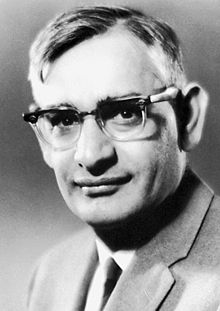He was an American engineer and inventor, and an early computer and Internet pioneer. He is best known for his work on the challenges of human–computer interaction, particularly while at his Augmentation Research Center Lab in SRI International, resulting in the invention of the computer mouse, and the development of hypertext, networked computers, and precursors to graphical user interfaces. These were demonstrated at The Mother of All Demos in 1968. His Law, the observation that the intrinsic rate of human performance is exponential, is named after him.
In the early 1950s, he decided that instead of "having a steady job" (such as his position at NASA's Ames Research Center) he would focus on making the world a better place, especially through the use of computers. He was therefore a committed, vocal proponent of the development and use of computers and computer networks to help cope with the world’s increasingly urgent and complex problems. He embedded a set of organizing principles in his lab, which he termed "bootstrapping strategy". He designed the strategy to accelerate the rate of innovation of his lab.
Read more & watch the video...: Gyaat:If only 'MOUSE' was not invented; this guy pioneered the term bootstrapping in twentieth century!!!
.jpg)


